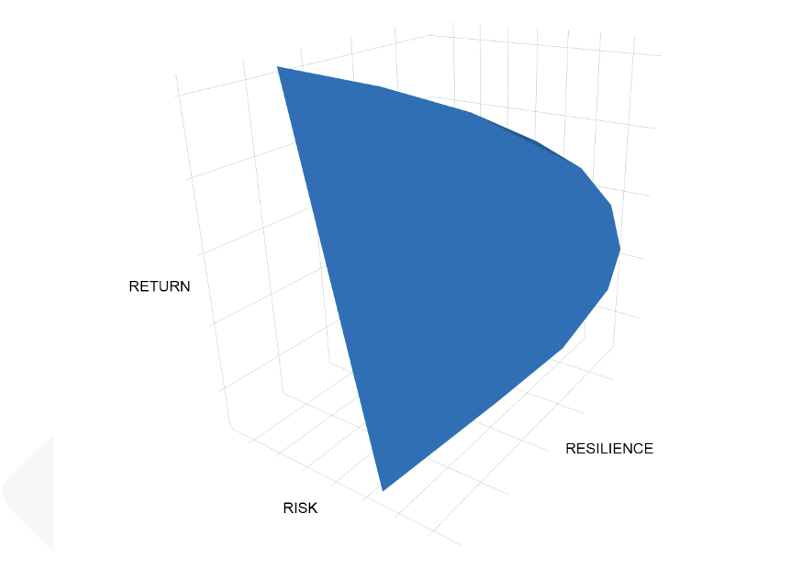Markets are going to react to what’s not priced in – and analysis of what is currently priced in, doesn’t add up. So warned Bridgewater’s chief investment strategist Rebecca Patterson, speaking at FIS in Maastricht.
Markets are discounting that the Federal Reserve starts easing interest rates next year. But markets have not begun discounting that earnings, and earnings expectations, are expected to decline, and if Central Banks are serious about taming inflation, they will destroy demand which will feed into earning expectations. “In aggregate, and at a high level, equity markets would be up this year if we took out the impact of the discount rate,” she said.
Patterson told FIS delegates that Bridgewater’s views on inflation have evolved. Strategists at the world’s biggest hedge fund, which runs a celebrated pure alpha and all-weather strategy, now believe that although inflation will remain “sticky” and will be slow to fall, a more pressing challenge for investors looms in slow growth. Signposting a meaningful contraction ahead, she said slower growth than expected, combined with high inflation, raises the spectre of stagflation.
Almost every asset class will be impacted by central bank tightening in a process that is already starting to appear. The impact is becoming visible in the housing market, and it is increasingly apparent in consumer and business confidence. She said that data suggests the US will likely face a 2 per cent contraction next year, with Europe’s economy shrinking more. “We see a lot of downside risk on growth,” she reiterated.
Policy misstep
The difficult economic backdrop is leading to the appearance of economic stimulus in some jurisdictions like Germany and California. But the travails of the United Kingdom’s ex-Prime Minster Truss underscore the challenge of introducing fiscal stimulus in the current climate. “She thought the best way to help the UK was to cap energy and give subsidies to business,” said Patterson. “But she did it with high debt levels and while the BofE was trying to get inflation under control. With fiscal stimulus, monetary tightening, and high debt levels, it was no surprise that bond yields shot up.”
Europe faces slow growth and real incomes being hard hit; meanwhile companies are experiencing rising costs caused by high inflation and slower growth. A potential policy misstep could include the ECB using asset purchases to buy Italian bonds to stop spreads widening between Italy and other, stronger, European sovereigns, she warned. “What if some countries don’t want to use [asset purchases] to bail out Italy?” she asked. “The ECB’s job is challenging because the downside to growth is larger than what markets discounting.”
Strategies that worked in the past no longer work. For example, equities and bonds have both performed in a low inflationary world where growth has been mostly positive. Investors have moved into private investments and got paid to take overweight US positions. Moreover, in the past when equities have fallen, Central Banks have stepped in by lowering interest rates and adding stimulus. “Equities turned quickly, even with slowing growth,” she said. Now however, as Central Banks target getting inflation back to between three and two per cent by raising rates, this won’t be possible.
China
Patterson said Chinese growth is being hit on a couple of fronts. Consumer confidence has been hit by the property crisis while enduring lockdowns are crimping the economy. Exports have been hit by the slowdown in Europe. Positively, she said China doesn’t have policy constraints and can put in place fiscal and monetary stimulus. Still, China remains stymied by the absence of demand. “The problem is that even if you create the availability of credit, you still need demand.” China is also battling longer term challenges like its demographics; productivity will also be impacted by China struggling to access the technology it needs, she predicted.
Beta challenge
Investors will struggle to access beta in the current environment, meaning alpha becomes more important now than in years prior. This means country selection; manager selection and geographic diversification will become more important than before. Opportunity will come from looking below the hood, although she warned that Bridgewater remains cautious on European equities given the downside risk to growth is greater than what has been discounted. She said key factors to get capital flowing back into Europe depend on the war ending, and China reopening.
European equites may remain in the doldrums, but Bridgewater’s outlook for commodities is more positive. Many commodities have experienced under investment, particularly energy and metals. When demand picks up, supply may not be there, she warned. Moreover, the transition to a green economy will support commodity prices at the margins.
Patterson noted that inflation targeting by central banks has helped anchor expectations. Still, raising rates to tackle inflation will lead to people losing their jobs. “Raising rates isn’t easy,” she said. Moreover, when people start to lose jobs, Central Banks risk rate rises becoming politicised.
She noticed that foreign allocations to US assets are at the highest level since 1980s. Sure, investors may reduce their allocations to US assets when growth in other markets looks better, but she warned that just because another market looks cheap, it doesn’t make it attractive.
